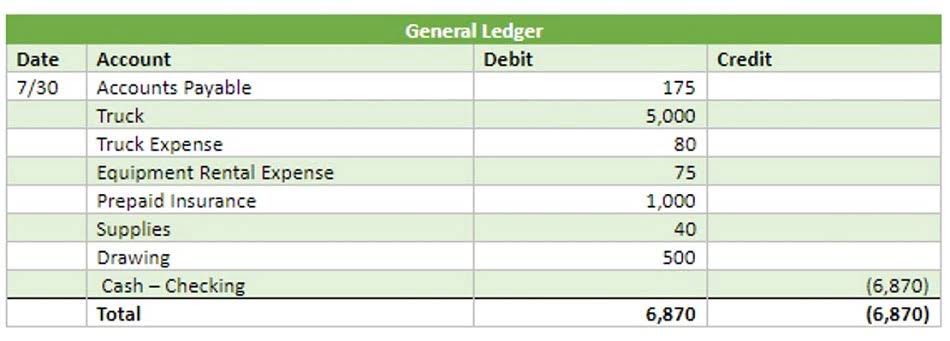
Current assets can include cash, investments, accounts receivable, and inventory, while non-current assets can include property, plant, and equipment, as well as intangible assets. Stockholders’ equity can be calculated by subtracting the total liabilities of a business from total assets or as the sum formula for equity of share capital and retained earnings minus treasury shares. Shareholders’ equity represents the net worth of a company—the dollar amount that would be returned to shareholders if a company’s total assets were liquidated and all its debts were repaid. This financial metric is typically listed on a company’s balance sheet and is commonly used by analysts to determine the company’s overall fiscal health.
- The mistake of neglecting a company’s potentially dilutive securities—i.e.
- These additions or deductions are brought out by changes in realized profits, changes in unrealized profits, issuance of new shares, purchase of existing shares, and dividend declaration.
- Significant influence, typically 20% to 50% ownership, necessitates using the equity method, reflecting your share of the investee’s net income.
- The cost of capital is generally calculated using the weighted average cost of capital.
How Will I Use This in Real Life?
- If used in conjunction with other tools and metrics, the investor can accurately analyze the health of an organization.
- Get instant access to video lessons taught by experienced investment bankers.
- The use of beta as a proxy for risk has received widespread criticism from many practitioners, who believe it to be a flawed measure of risk.
- The information can be found in company filings (annual and quarterly reports or through press releases).
- Firms often use it as a capital budgeting threshold for the required rate of return.
It is equal to the total dollar amount that would be returned to the shareholders if the company were liquidated and all its debts were paid off. Basic equity value is simply calculated by multiplying a company’s share price by the number of basic shares outstanding. A company’s basic shares outstanding Insurance Accounting can be found on the first page of its 10K report.
- In practice, the proprietary ratio tends to be a reliable indicator of financial stability, as it provides insights into a company’s current capitalization (and how operations and capital expenditures are financed).
- If used in conjunction with other tools and metrics, an investor can accurately analyze the health of an organization.
- Upgrading to a paid membership gives you access to our extensive collection of plug-and-play Templates designed to power your performance—as well as CFI’s full course catalog and accredited Certification Programs.
- This means that the company owes more than it owns and can be a cause for concern.
- When your company incorporates, it has to call a board meeting to decide how many shares each of the company’s original owners will get.
- It reflects the value that belongs to the shareholders or owners of the business.
How Do You Calculate a Company’s Equity?

The accounting equation still applies where stated equity on the balance sheet is what is left over when subtracting liabilities from assets, arriving at an estimate of book value. Privately held companies can then seek investors by selling off shares directly in private placements. These private equity investors can include institutions like pension funds, university endowments, insurance companies, or accredited individuals. Equity is also known as shareholder’s equity and is easily available as a line item in the balance sheet. It is the amount received by the shareholders if we liquidate all the company assets and repay all the debt.

How To Prepare Financial Statements

Starting off, the risk-free rate (rf) should theoretically reflect the yield to maturity (YTM) of default-free government bonds of equivalent maturity to the duration of each cash flow being discounted. The cost of equity can mean two different things, depending on who’s using it. Investors use it as a benchmark for an equity investment, while companies use it for projects or related investments. Conceptually, stockholders’ equity is useful as a means of judging the funds retained within a business.

Comparing Accounting Methods
By analyzing equity trends, you can understand how investment impacts, shareholder rights, and financial strategies shape a company’s trajectory. For instance, market bookkeeping fluctuations often cause changes in a company’s equity, influenced by asset values and liabilities. If you want to calculate the value of a company’s equity, you can find the information you need from its balance sheet.
- If you take a job that includes equity compensation, then you’ll be receiving shares as part of your total compensation package.
- Still, as a general rule of thumb, most companies aim for an equity ratio of around 50%.
- As market conditions fluctuate, it’s crucial to regularly update and adjust equity figures to reflect the current financial landscape accurately.
- Given the enterprise value, one can work backward to calculate equity value.
- As assets increase, the value of the company increases, which increases the value of shareholders’ ownership stake in the company.
- On the other hand, an investor might feel comfortable buying shares in a relatively weak business as long as the price they pay is sufficiently low relative to its equity.
